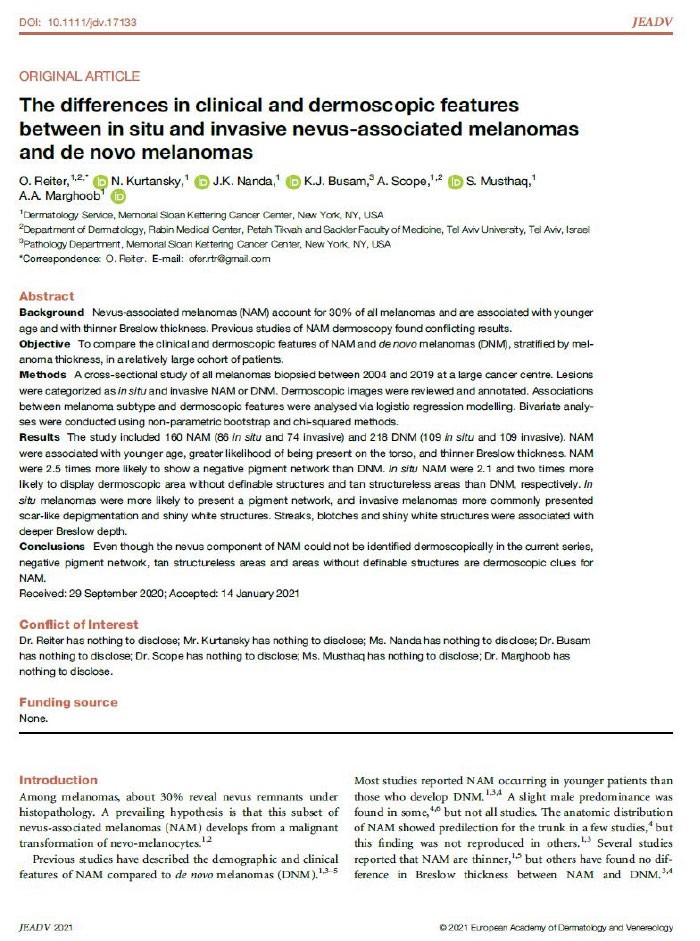Reiter O, Kurtansky N, Nanda JK, Busam KJ, Scope A, Musthaq S, Marghoob AA.
Abstract
Background: Nevus-associated melanomas (NAM) account for 30% of all melanomas and are associated with younger age and with thinner Breslow thickness. Previous studies of NAM dermoscopy found conflicting results.
Objective: To compare the clinical and dermoscopic features of NAM and de novo melanomas (DNM), stratified by melanoma thickness, in a relatively large cohort of patients.
Methods: A cross-sectional study of all melanomas biopsied between 2004 and 2019 at a large cancer centre. Lesions were categorized as in situ and invasive NAM or DNM. Dermoscopic images were reviewed and annotated. Associations between melanoma subtype and dermoscopic features were analysed via logistic regression modelling. Bivariate analyses were conducted using non-parametric bootstrap and chi-squared methods.
Results: The study included 160 NAM (86 in situ and 74 invasive) and 218 DNM (109 in situ and 109 invasive). NAM were associated with younger age, greater likelihood of being present on the torso, and thinner Breslow thickness. NAM were 2.5 times more likely to show a negative pigment network than DNM. In situ NAM were 2.1 and two times more likely to display dermoscopic area without definable structures and tan structureless areas than DNM, respectively. In situ melanomas were more likely to present a pigment network, and invasive melanomas more commonly presented scar-like depigmentation and shiny white structures. Streaks, blotches and shiny white structures were associated with deeper Breslow depth.
Conclusions: Even though the nevus component of NAM could not be identified dermoscopically in the current series, negative pigment network, tan structureless areas and areas without definable structures are dermoscopic clues for NAM.


